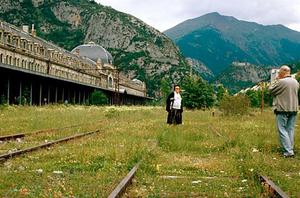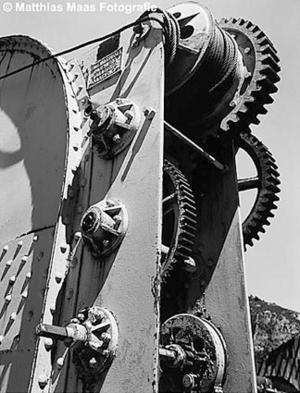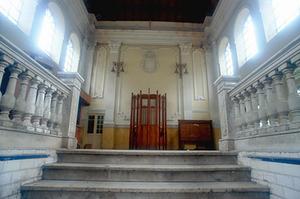July 31, 2005
Urban Archeology
I am fascinated by ruined industrial buildings. When I lived in Boston there were a few sites I liked to visit. Here is one that is amazing -- Canfranc From their website:In 1853 Juan Bruil, himself executive director of a bank, from Zaragoza already had the idea to install a train connection through the central Pyrenees, the shortest link between Madrid and Paris. He submitted his proposal comprising 30 pages to the "Friends of the Country"; the latter a club of influencal enterpreneurs. In the same year at Christmas two engineers received a particular present: they should work out the initial plan for the project. This marked the begin of the quarrel regarding the best route and the fight of representatives of towns and provinces, who wanted to take advantage of the plans. It almost took 30 years until in 1882 the government approved the project. At the beginning however there was the problem to built a tunnel through the Pyrenees and no solution to it. Over 15 years experts watched the weather before they agreed on the valley of Aragón and Canfranc as the future site of the boarder train station as well as the southern end of the tunnel. Technical obstacles and diplomatic difficulties marked the development of the construction project; the construction work were repeatedly stopped and caused delays. In 1915 the tunnel, which was 7875 meters long, was finished; the architects built an artificial plateau by using the stones taken out of the mountain and on this area the building of the train station arised, a mixture of classicism and art nouveau.
"The Pyrenees do not longer exist", proudly called King Alfonso XII. of Spain at the inauguration, general Primo de Rivera and the president of the French Republic being present. After 70 years of planning and construction work people of the sparse mountain valley hoped for a bit of the luxury built there, intended to attract guests from all over Europe to stay in the hotel of the train station. However already during the time the connection was built the Spanish government refused to adjust the width of their rail tracks according to the European standard, thereby planting the seed for the project to fail. Each passenger had to pass passport controls in the train stations, each bit of luggage customs, goods were shifted by crane from one train to the other. Soon it became apparent that the loss of time in Canfranc caused the connection to become ineconomic for hauliers. Only 8 years after its opening on account of the Spanish civil war the Somport tunnel, cutting through the Pyrenees and connecting France with Spain, became closed. Also during the second world war the connection remained closed. Thereafter again, but not for long, Canfranc became important, yet in 1970 when on the French side the rail bridge of Estanguet collapsed it was the end of the international rail traffic. Today on the Spanish side there is a train connection from Zaragoza to Canfranc and back twice per day.



Click for full size Images
Comments
Post a comment